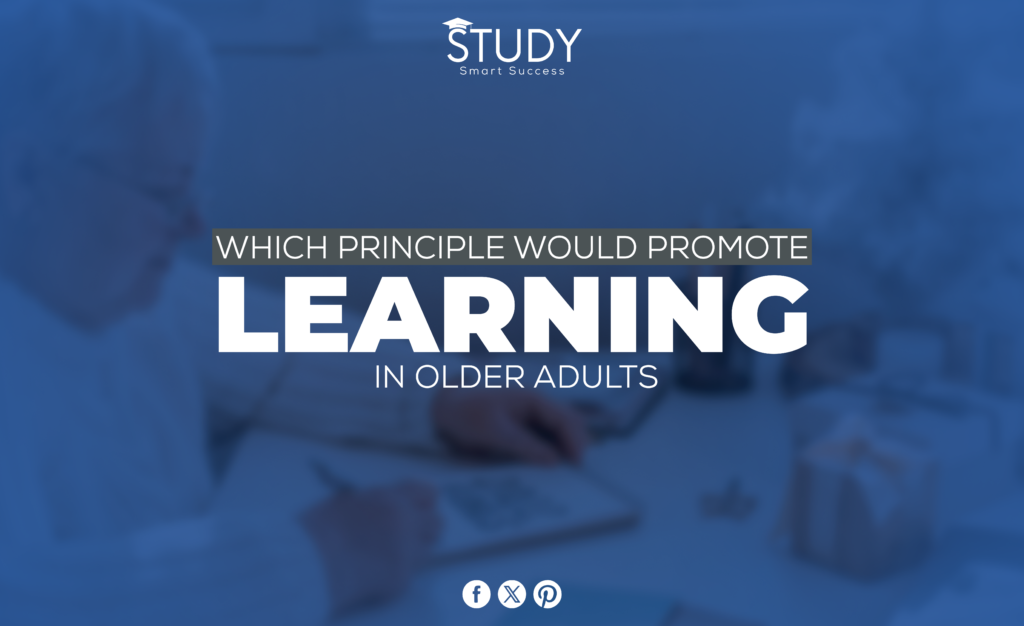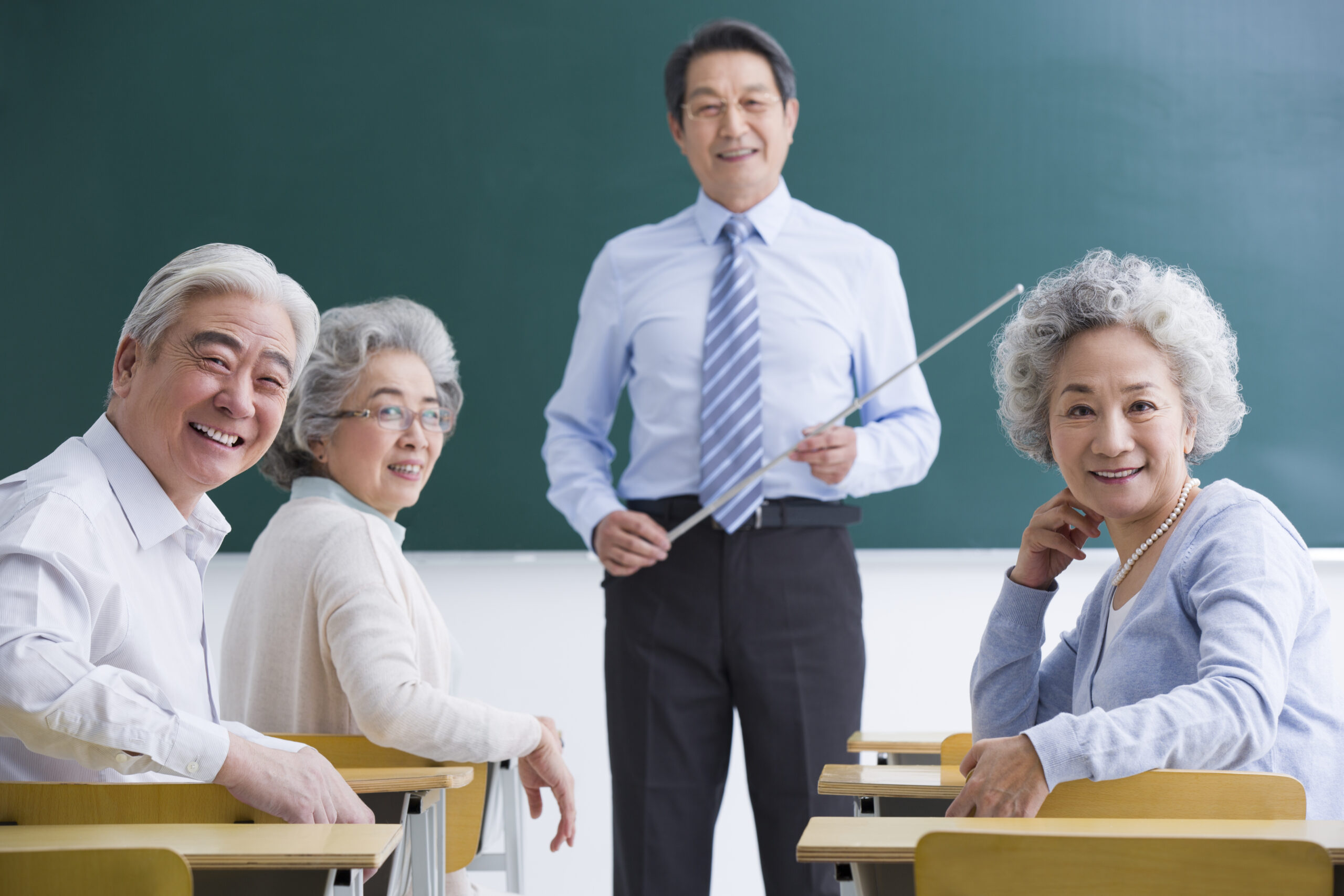7 Proven Rules for Older Adult Lifelong Learning
Seeking information and getting better at yourself are things that people have always done. Education systems have often been focused on kids, but learning as an adult, especially as you get older, is a significant social need that isn’t consistently recognized. Continuing to learn in old age has many benefits, from improving your mind to feeling better overall. But there’s a quiet change: increasingly older people look for ways to learn after leaving. This article belongs to the 7 Proven Rules for Older Adult Lifelong Learning: Which Principle Would Promote Learning in Older Adults.
Otherwise, If you want to learn Best Practices in Education for your academic growth, see our blog for better academic performance.
This piece looks at seven rules that can help make a learning space that fits the needs and hobbies of older people. Whether you’re an older person looking to keep your mind and spirit active or a teacher wanting to make programs that make a difference, these tips will help you encourage a culture of lifelong learning that’s fun and beneficial for older people.
Principle 1:
Prioritize Personal Relevance and Meaningful Content
Learning needs to be tailored to each person to have a natural effect. For older people, using a teaching method that focuses on how information applies to their lives can make all the difference. It’s much more likely that someone will remember and add information directly related to their life events, wants, and goals to their knowledge base.
Making sure that classes and events are relevant to people’s experiences, local cultures, or hobbies makes learning essential and valuable. Adapted materials that fit an older adult’s life stage can also help them connect with the material, keeping them motivated to learn.
Principle 2:
Encourage Self-Paced Learning
When trying to get older people to learn, flexibility is essential. Many people can’t do what they want because of health problems, caring for others, or other things that get in the way of their usual routine. Self-paced learning choices, like online classes with no set start or end dates, can give older students the freedom to work at their own pace and in a way that works for them.
It might seem complicated to use technology, but platforms with the user experience in mind, like those with easy-to-use interfaces and robust support systems, can make the switch more accessible and the self-paced method more fun and available. We aim to give adults the tools to learn when and where it works best for them.
Principle 3:
Nurture a Social Learning Community
People interact with each other when they learn. This is especially true for older people, who are more likely to become socially isolated. Making a lively learning group is beneficial as it allows people to share what they know, work together on projects, and make friends.
These learning groups can meet in real life at places like senior centers, libraries, or community centers, and they can stay connected online through tools like social media and teleconferencing. Sharing stories makes people feel like they join and can significantly improve learning, resulting in more active participation and better memory.
Principle 4:
Integrate Physical and Mental Engagement
Physical movement and training have been linked to better brain function in older people. Including some physical activities in learning can give adult education a more complete look. Chair yoga, walking book clubs, and gardening therapy are all examples of activities that can help you move around and think simultaneously.
In addition, learning through multiple senses can help build better brain links and help you remember what you’ve learned. For example, cooking lessons where you can read and follow recipes and use your senses of smell, taste, and touch can be a rich and enjoyable way to learn.
Principle 5:
Foster a Growth Mindset
Encouraging a flexible and open way of thinking about learning is very important. No matter what age-related myths say, older people should believe they can learn and grow. This “growth mindset” can be affirmed by giving praise, making tasks that can be met, and enjoying all wins, no matter how small.
In this area, leadership is critical. This way of thinking needs to be modeled by teachers, program managers, and the younger people in the learning group. Respecting each other’s learning styles is a helpful setting for growth and discovery.
Principle 6:
Leverage Storytelling and Memory Techniques
People naturally like to learn through stories, which is why storytelling works well. Using stories to teach can make complex topics easier to understand and more enjoyable. People of all ages need to learn when paired with remembering methods like making emotional or visual links with new knowledge.
A spontaneous way to combine personal history with teaching material is to get older people to share their life stories and become speakers. There are memory techniques, like the method of loci or mental devices, that can help students remember even more of the new information they learn.
Principle 7:
Provide Ongoing Support and Encouragement
Problems like self-doubt, anger with technology, or just too much knowledge are all things that can get in the way of ongoing learning. Offering ongoing support, such as through one-on-one teaching, peer tutoring, or help desks that are easy for older students to access, can help them feel ready and motivated to keep learning.
It’s also important to celebrate and recognize big wins and goals. Noticing that someone has done something well, even if it’s just in public, can boost their confidence and motivate them to take the next step in their educational journey.
We can create a space that meets the needs of older people by incorporating these ideas into school programs and personal learning paths. We not only make their lives better, but we also use the considerable knowledge and experience they bring to the table. “You’re never too old to learn” is not just a saying; it’s a profound truth that could help a whole generation reach their full potential if followed.
Conclusion
To make the school system more welcoming and helpful for older people, these seven concepts are an excellent place to start. Educational programs can give this group of people important, engaging, and life-changing learning experiences by recognizing their different needs and drawing on their many life experiences. Fostering a growth attitude, encouraging social connections, and incorporating individual learning methods are all things done to ensure that education is still fun and easy for people of all ages.
As society changes, the value of ongoing learning shows that older people have the power to learn and make significant contributions to their groups and society as a whole. People who support these ideas are paving the way for a future where learning is open to everyone at any age, and everyone can grow and be happy.



